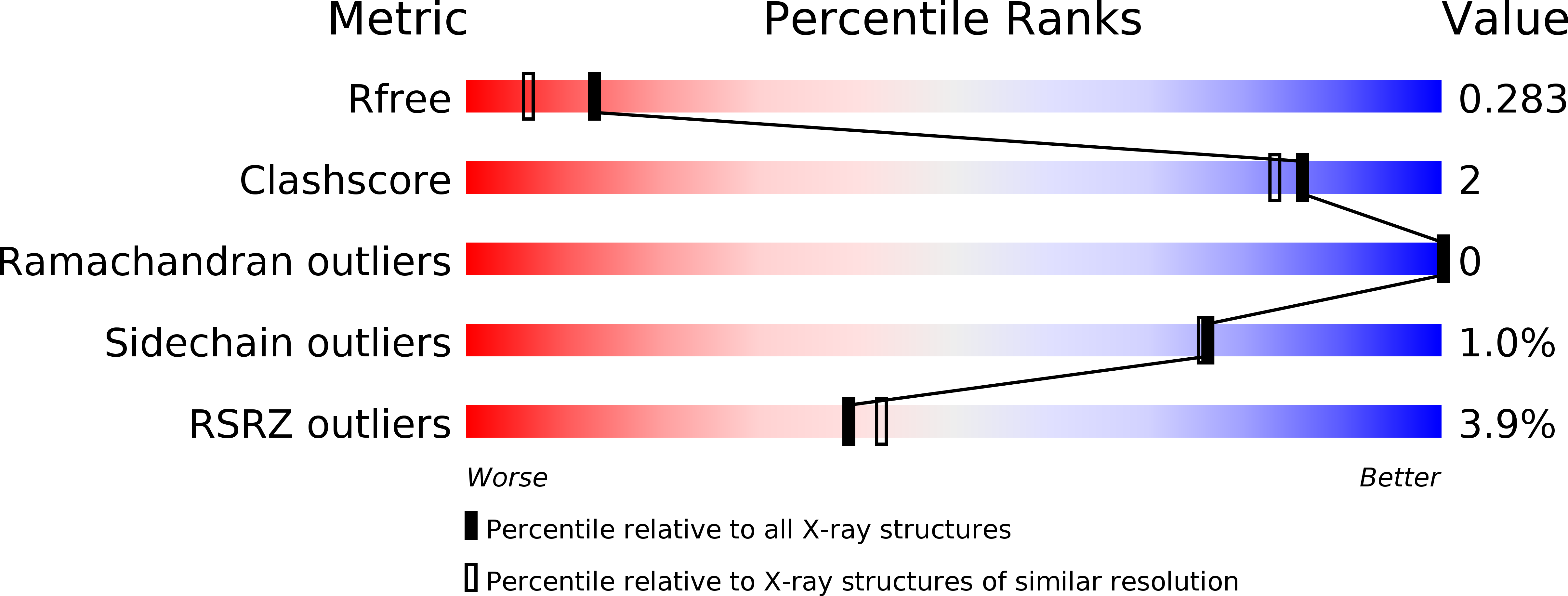Target identification of small molecules using large-scale CRISPR-Cas mutagenesis scanning of essential genes.
Neggers, J.E., Kwanten, B., Dierckx, T., Noguchi, H., Voet, A., Bral, L., Minner, K., Massant, B., Kint, N., Delforge, M., Vercruysse, T., Baloglu, E., Senapedis, W., Jacquemyn, M., Daelemans, D.(2018) Nat Commun 9: 502-502
- PubMed: 29402884
- DOI: https://doi.org/10.1038/s41467-017-02349-8
- Primary Citation of Related Structures:
5NSD - PubMed Abstract:
Unraveling the mechanism of action and molecular target of small molecules remains a major challenge in drug discovery. While many cancer drugs target genetic vulnerabilities, loss-of-function screens fail to identify essential genes in drug mechanism of action. Here, we report CRISPRres, a CRISPR-Cas-based genetic screening approach to rapidly derive and identify drug resistance mutations in essential genes. It exploits the local genetic variation created by CRISPR-Cas-induced non-homologous end-joining (NHEJ) repair to generate a wide variety of functional in-frame mutations. Using large sgRNA tiling libraries and known drug-target pairs, we validate it as a target identification approach. We apply CRISPRres to the anticancer agent KPT-9274 and identify nicotinamide phosphoribosyltransferase (NAMPT) as its main target. These results present a powerful and simple genetic approach to create many protein variants that, in combination with positive selection, can be applied to reveal the cellular target of small-molecule inhibitors.
Organizational Affiliation:
KU Leuven Department of Microbiology and Immunology, Laboratory of Virology and Chemotherapy, Rega Institute for Medical Research, Herestraat 49, 3000, Leuven, Belgium.

















